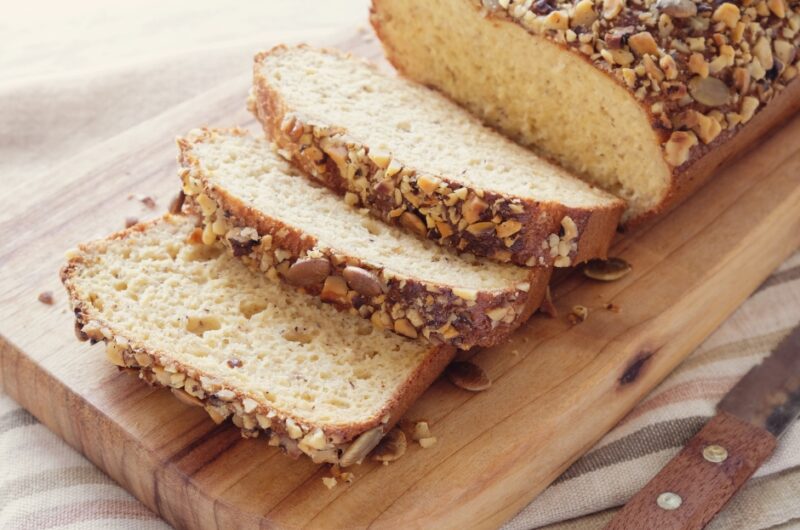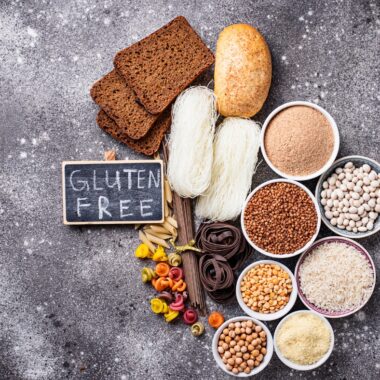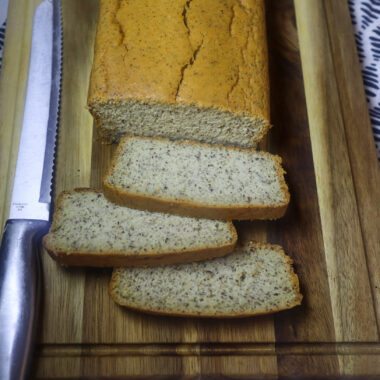Almond flour is a great tool for creating delicious low-carb and gluten-free baked goods! Almond flour has undoubtedly earned its reputation as a versatile alternative, offering a nutty goodness that caters to various dietary preferences. Whether you’re whipping up cookies, cakes, or savory treats, almond flour has likely become a staple in your kitchen.
As much as we adore almond flour, there comes a moment when the quest for perfection beckons. After you get over the initial hype of this nutrient-packed flour, you might find yourself facing a common problem– how to make almond flour baked goods less dense. In this guide, we’ll explore a treasure trove of tips and tricks to transform dense almond flour baked goods into light and fluffy masterpieces.
Table of Contents
Choosing Wisely: The Impact of Almond Flour on Baking Success
The type of almond flour you use can significantly impact the texture, moisture content, and overall quality of your almond flour baked goods. Most people think you can use almond flour and almond meal interchangeably. However, almond flour and almond meal are related but have distinct differences based on how they are made. Let’s explore these differences.
Almond Flour:
- Almond flour is produced from blanched almonds (almonds with the skins removed). The almonds are ground into a fine, flour-like consistency.
- Almond flour has a finer texture, resulting in baked goods with a lighter and softer texture.
- Almond flour is usually lighter in color since it is made from blanched almonds.
- Almond flour is well-suited for delicate baked goods with a fine texture, like cakes, cookies, and macarons.
Almond Meal:
- Almond meal is produced from almonds that still have their skins intact. The almonds are ground, resulting in a coarser texture than almond flour.
- The coarser, grainier texture can give baked goods a denser texture.
- Almond meal has a darker color since they are processed with the skins intact.
- Almond meal is best for heartier baked goods like certain breads, muffins, and crusts. It’s also perfect for dishes that require breadcrumbs, like meatloaf, since it provides a more rustic texture and nutty flavor.
Why the Type of Almond Flour Matters:
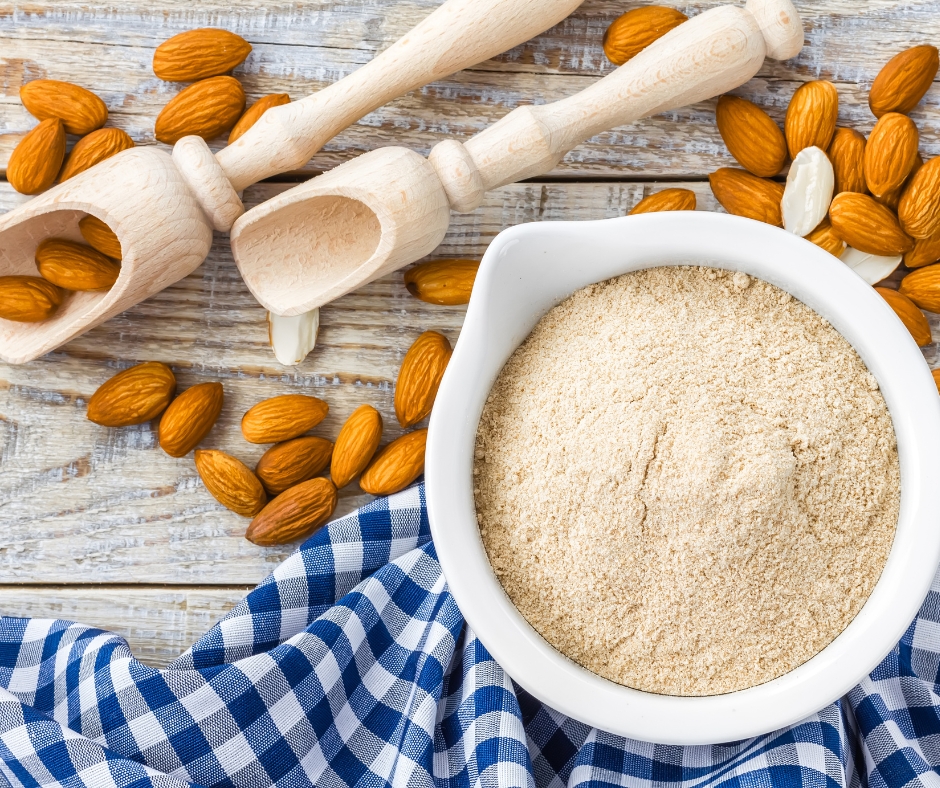
The type of almond flour you use matters. For example, almond flour cupcakes may have a dense and grainy texture if made with almond meal. This is why it is so important to choose the right almond flour. The almond flour you use will affect the texture, appearance, moisture levels, and flavor of baked goods.
- Texture: Almond flour’s finer texture yields a lighter and more delicate texture in baked goods, making it preferable for certain recipes. Almond meal, with its coarser texture, can result in denser and more rustic textures.
- Appearance: Almond flour’s lighter color can contribute to a more visually appealing appearance in baked goods, especially in recipes where a light color is desired.
- Moisture Content: Almond flour made from blanched almonds tends to have lower moisture levels than almond meal. This can impact the overall moisture balance in recipes.
- Flavor: The presence of almond skins in almond meal can impart a slightly nuttier and more robust flavor compared to the milder taste of almond flour.
When selecting almond flour for your recipes, consider the specific characteristics you want in the final product. Some recipes may benefit from the fine texture of almond flour, while others may be enhanced by the rustic qualities of almond meal. Additionally, following the recipe’s recommendations regarding the type of almond flour specified for optimal results is essential.
How To Make Almond Flour Baked Goods Less Dense
Compared to traditional baked goods, almond flour baked goods are naturally dense. However, there are a few ways you can lighten the texture of almond flour baked goods.
Sift Your Almond Flour
Sifting the almond flour is the easiest way to lighten its texture. Although the effect may be subtle compared to other factors like leavening agents or moisture content, it is still worth considering. Here’s how sifting can influence the texture:
- Removing Lumps: Almond flour can sometimes form clumps, especially if it has absorbed moisture. Sifting helps break up any clumps of flour, resulting in a smoother texture.
- Aeration: Sifting introduces air into the almond flour, which helps aerate the dry ingredients. While this aeration is not as significant as that achieved through leavening agents, it can still positively impact the final texture, making the baked goods slightly lighter.
- Consistency in Measurement: Sifting helps you measure almond flour more accurately. If the almond flour is compacted or settled, measuring by volume could result in an inaccurate quantity. Sifting aerates the almond flour first, making it easier to measure it more accurately, which is important for the balance of dry and wet ingredients in the recipe.
While sifting can contribute to a lighter texture, it’s essential to consider the recipe you are using. If your almond flour is already finely ground and free of lumps, the impact of sifting may be less noticeable. However, for recipes where a delicate texture is crucial, such as in macarons or certain cakes, sifting can be a helpful step.
Keep in mind that sifting is just one factor among many that contribute to the texture of almond flour baked goods. The type of almond flour, leavening agents, moisture content, and overall recipe formulation are equally important considerations.
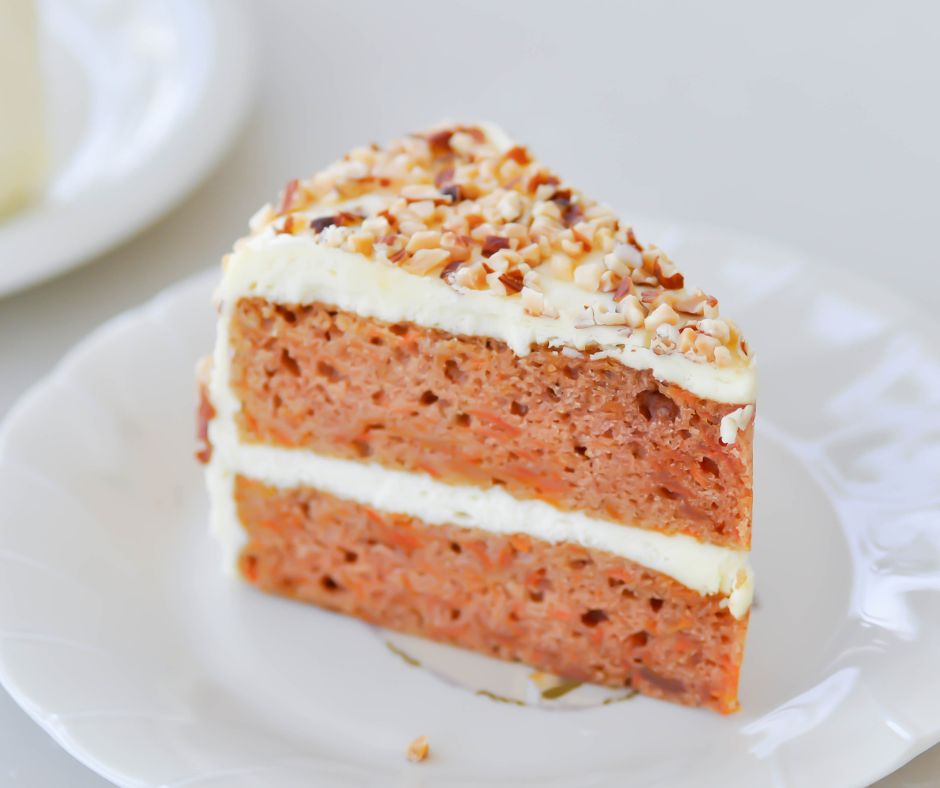
Increase The Leavening Agents
Almond flour baked goods are leavened with baking powder or baking soda. Since almond flour is heavier than wheat flour, it needs more leavening agents.
Add an additional 1/2 to 1 teaspoon of baking powder to your almond flour baked goods.
If you are using baking soda, increase the baking soda by 1/4 to 1/2 teaspoon of baking soda to your almond flour baked goods. However, do not add too much baking soda, or your baked goods will have a bitter, metallic taste.
Nevertheless, adding more baking soda or baking powder will help offset the density of the almond flour.
Add More Eggs
Almond flour baked goods need moisture. Eggs are binders, but they also add moisture to baked goods. Here is how adding eggs can help lighten the texture of almond flour baked goods:
- Structure and Stability: Eggs provide structure and stability to baked goods by coagulating during the baking process. The proteins in eggs help form a network that supports the overall structure of the baked item. This is especially important in gluten-free baking, where almond flour lacks the structural properties of wheat flour.
- Leavening: Eggs can contribute to the leavening of baked goods. When beaten, eggs incorporate air. During baking, the trapped air expands, contributing to the rising of the batter. This leavening effect can help create a lighter and more airy texture in almond flour baked goods.
- Moisture Content: Eggs add moisture to the batter, and moisture is crucial for preventing baked goods from becoming overly dry. Almond flour tends to absorb moisture. The additional moisture from eggs contributes to a more tender and moist final product.
- Binding Properties: Eggs act as a binding agent, helping to hold the ingredients together. This is especially important in almond flour recipes as they lack gluten. The binding properties of eggs create a cohesive, less crumbly texture.
- Emulsification: Eggs act as emulsifiers, helping to create a smooth and well-incorporated batter. This contributes to the overall texture and mouthfeel of the baked goods.
When adjusting the number of eggs in a recipe, striking a balance is essential. Too many eggs can result in an overly wet batter, while too few can lead to a dry and crumbly texture. Experiment with the number of eggs in proportion to other ingredients to help you achieve the optimal balance for your almond flour baked goods.
Add Dairy
Dairy products add moisture to almond flour baked goods. More moisture equals a lighter texture.
Let’s take a look at the effects of dairy on almond flour baked goods:
- Moisture Content: Dairy products add moisture to the dough or batter. Almond flour tends to absorb moisture, and the additional liquid from dairy helps create a more hydrated and lighter texture in the final product.
- Fat Content: Dairy products contain fats, which gives almond flour baked goods a more tender, softer texture in baked goods. The fat content helps coat the proteins in almond flour, preventing them from forming a dense structure and contributing to a more delicate crumb.
- Protein and Structure: Dairy products, particularly those with higher protein content, like Greek yogurt, contribute to the overall structure of the baked goods. Proteins in dairy can interact with almond flour proteins, providing additional support and structure to the final product.
- Acidity for Leavening: Some dairy products, like yogurt and buttermilk, are slightly acidic. The acidity can react with baking soda (if used in the recipe) to produce carbon dioxide gas, contributing to the leavening and lightening of the texture.
- Emulsification: Dairy can act as an emulsifier, helping to create a smooth and well-incorporated batter. This contributes to the overall texture and mouthfeel of the baked goods.
When adding more dairy to almond flour recipes, consider the following:
- Type of Dairy: Experiment with different types of dairy, such as whole milk, buttermilk, yogurt, or sour cream, to find the one that best suits your desired texture and flavor profile.
- Adjusting Consistency: Be mindful of the overall consistency of the batter. Too much liquid can lead to a thin batter, affecting the structure of the baked goods. Start with 1/4 cup or 1/3 cup of dairy, and adjust the quantities of other ingredients accordingly.
By carefully adjusting the amount and type of dairy in your almond flour recipes, you can achieve a lighter texture while enhancing the flavor and overall quality of the baked goods.
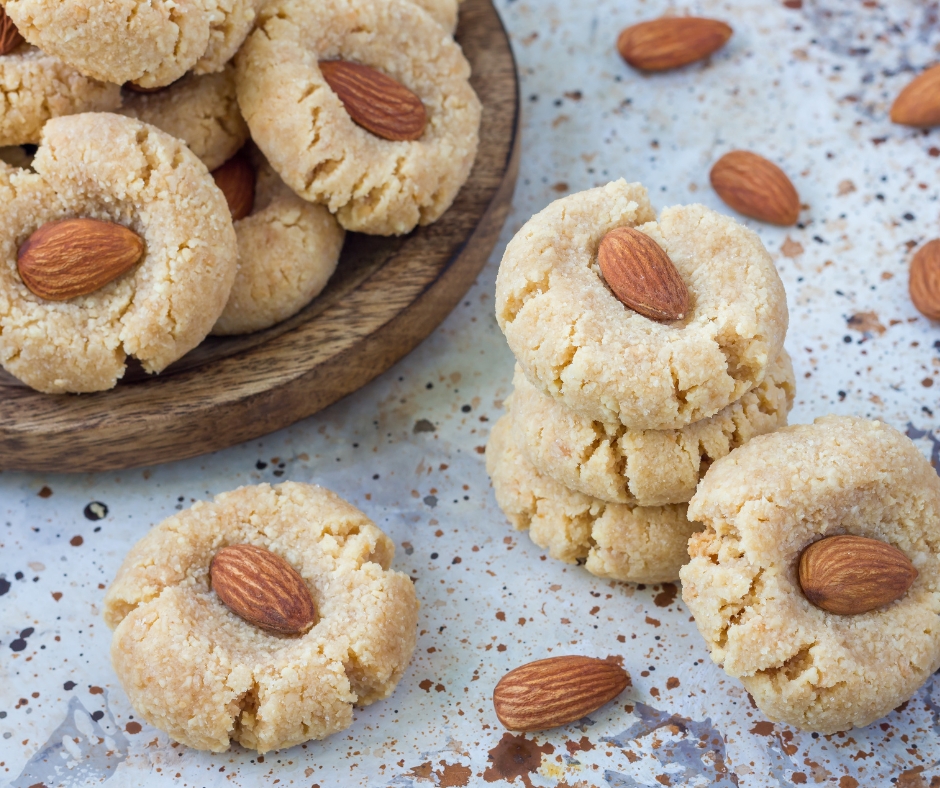
Whip The Egg Whites
Whipping the egg whites is a game changer for almond flour baked goods. They act as a natural leavener, adding volume and lightness to certain baked goods.
Egg whites help lighten almond flour baked goods in several ways:
- Whipping and Incorporating Air: Whipping egg whites incorporates air into the structure, creating a foam. The air bubbles in the foam expand during baking, helping to leaven and lift the baked goods.
- Volume and Fluffiness: The whipped egg whites increase in volume, giving the final product a light, fluffy texture. This volume expansion is particularly beneficial in recipes with a delicate and airy consistency, like angel food cake.
- Stabilizing the Foam: Egg whites contain proteins that help stabilize the foam’s structure. The proteins form a network that traps the air bubbles, preventing them from collapsing during the baking process. This stability is crucial for maintaining the lightness and structure of the baked goods.
- Binding Properties: While the egg whites contribute to leavening, they also provide binding properties that help hold the ingredients together. This is important in gluten-free baking, where the structure provided by gluten is lacking.
The key to using egg whites to reduce the density of almond flour baked goods is to carefully fold in the egg whites. If you beat or stir the egg whites vigorously into the batter, they will deflate, giving the baked goods a dense texture.
To use this method:
- Separate your eggs.
- First, mix the egg yolks with the remaining ingredients.
- Next, put the egg whites into a stand mixer and beat them for 8-9 minutes until they reach stiff peaks.
- Add a third of the egg whites to your batter. Fold them into the batter until combined.
- Repeat step 4 until all the egg whites have been mixed into the batter.
By incorporating whipped egg whites into your almond flour recipes, you can achieve a lighter and fluffier texture, especially in recipes where a delicate and airy crumb is desired, such as in almond flour cakes or macarons.
Add Mashed Fruits And Vegetables
Fruits and vegetables, specifically those that contain a lot of water, add moisture to the batter. Almond flour tends to absorb a significant amount of moisture, and a moist batter contributes to a lighter texture in the final product.
Some fruits, like certain berries or citrus fruits, contribute acidity to the batter. This acidity can react with baking soda to produce carbon dioxide gas, which helps the baked goods rise. This is particularly effective in recipes with baking soda as a leavening agent.
Add Nut Butter
Nut butters, like almond butter or cashew butter, can help lighten the texture of almond flour baked goods in several ways.
- Moisture Content: Nut butters contain natural oils, which add moisture to the batter. The moisture helps prevent the final product from becoming too dry, contributing to a softer and lighter texture.
- Fat Content: Nut butters are rich in healthy fats, which can add tenderness to baked goods. The rich fat content also enhances the overall flavor profile.
- Protein Content: Nut butters contain protein, which helps add structure to the baked goods. This is especially important in gluten-free baking, where the structure provided by gluten is lacking. The protein in nut butters helps bind the ingredients together, preventing the final product from being overly crumbly.
- Emulsification: Nut butters can act as emulsifiers, helping to create a smooth and well-incorporated batter. This contributes to a more uniform texture in the baked goods.
- Reduced Grittiness: Almond flour can sometimes have a slightly gritty texture. Adding nut butter helps mitigate this grittiness, resulting in a smoother, more pleasant mouthfeel.
When incorporating nut butter into almond flour recipes, consider the following tips:
- Choose a high-quality, natural nut butter without added sugars or oils.
- Adjust the quantity of nut butter based on the desired level of moisture and flavor you want the final product to have.
- Be mindful of the fat content in the nut butter and adjust other liquid and dry ingredients accordingly.
Nut butters can be a versatile and delicious addition to almond flour baked goods, contributing to a lighter and more enjoyable texture.
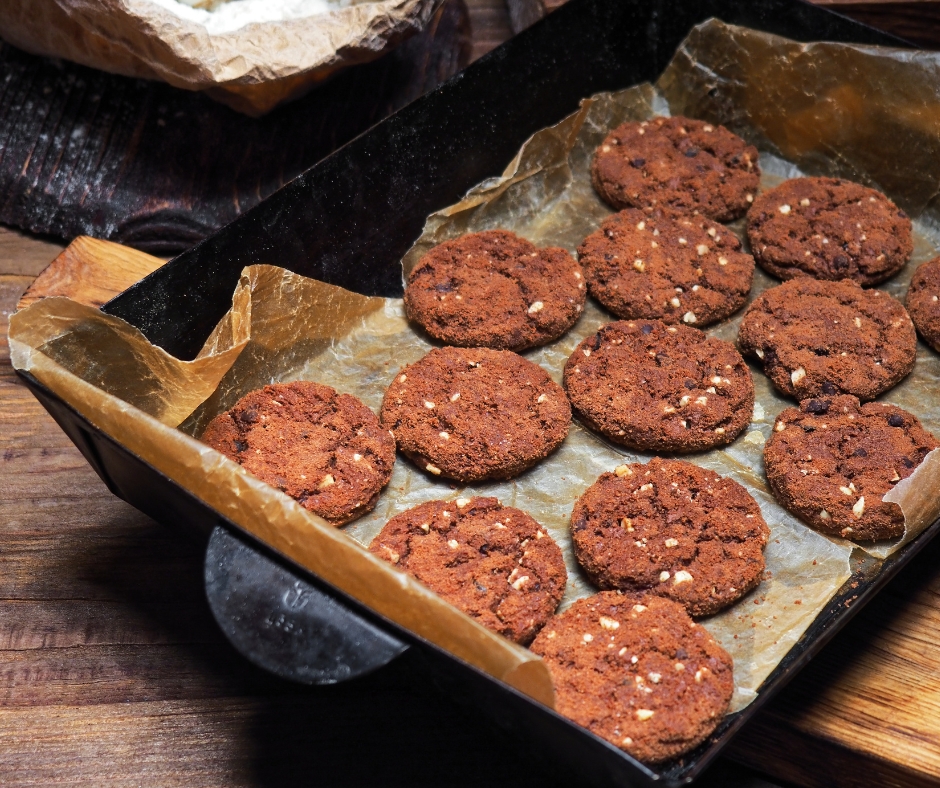
Acidic Ingredients
Baking soda is a common leavening agent. It reacts with acidic ingredients producing carbon dioxide gas, which helps leaven and lighten almond flour baked goods.
The chemical interaction between baking soda and acidic ingredients can be explained as follows:
- Acid-Base Reaction: Baking soda is a base. When it comes into contact with an acid, it undergoes an acid-base reaction.
- Formation of Carbon Dioxide Gas: The acid in the recipe reacts with the sodium bicarbonate in baking soda to produce carbon dioxide gas.
- Leavening Effect: The carbon dioxide gas gets trapped in the batter or dough, creating bubbles. These bubbles expand during baking, causing the baked goods to rise. This leavening effect is crucial for achieving a light and airy texture in almond flour recipes.
- pH Adjustment: Baking soda also helps to adjust the pH of the batter. Almond flour tends to be more alkaline, and adding an acid helps balance the pH. This adjustment contributes to the overall chemical reaction and helps create a favorable environment for leavening.
When using baking soda in almond flour recipes:
- Be sure to include an acidic ingredient in the recipe, such as yogurt, buttermilk, vinegar, or citrus juice.
- Pay attention to the balance of ingredients, as too much baking soda can result in a bitter, unpleasant aftertaste.
- Follow the recommended amounts specified in the recipe to achieve the desired leavening effect without compromising the flavor.
Understanding the chemistry of baking soda and its interaction with acidic ingredients is key to achieving the desired texture and taste in almond flour baked goods.
Mix It With Other Flours And Starches
Another easy way to lighten the texture of almond flour baked goods is to mix almond flour with other gluten-free flours. For example, adding 1/4 cup of coconut flour can decrease the density of almond flour baked goods. You can also mix almond flour with cassava flour, brown rice flour, oat flour, or other gluten-free flours.
Measure Almond flour The Right Way
Adding too much almond flour to your recipe is a surefire way to end up with dry baked goods. This is why you need to measure almond flour correctly.
You can use a digital scale or dry measuring cups to measure almond flour:
- Digital Scale: A digital scale is easier to use than dry measuring cups. You can place a bowl on top of the scale, press tare, and slowly spoon the almond flour into the bowl until you have the correct measurements.
- Dry Measuring Cups: Dry measuring cups require a little more work. Do not pack almond flour into the cups. Scoop it into the cup and use the back of a knife to level it off. This will keep you from adding too much almond flour to the recipe.
While almond flour baked goods can be dense, there are ways you can recreate the texture of traditional baked goods. Remember, baking with almond flour is all about achieving the perfect balance of moisture, structure, and aeration. Whether it be sifting almond flour, adding more eggs, or whipping your egg whites, these simple tricks will take your almond flour baked goods to the next level.
Happy baking!

